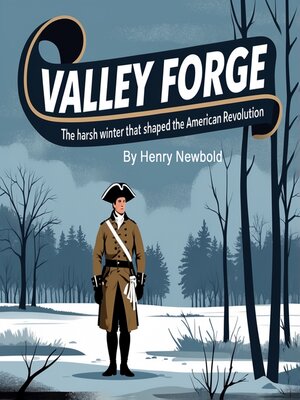Valley Forge
audiobook (Unabridged) ∣ The Harsh Winter That Shaped the American Revolution
By Henry Newbold

Sign up to save your library
With an OverDrive account, you can save your favorite libraries for at-a-glance information about availability. Find out more about OverDrive accounts.
Find this title in Libby, the library reading app by OverDrive.



Search for a digital library with this title
Title found at these libraries:
| Library Name | Distance |
|---|---|
| Loading... |
This audiobook is narrated by a digital voice.
In the autumn of 1777, the American Revolutionary War was entering a critical phase. The British had recently captured Philadelphia, the fledgling nation's capital, delivering a harsh blow to the morale of the Continental Congress and the army. General George Washington, faced with mounting pressure, was searching for a location where his troops could regroup, rest, and prepare for the upcoming campaign season. The road to Valley Forge was not just a physical journey, but a reflection of the challenges that the American cause had to endure in order to survive.
The strategic situation was dire. British General William Howe had successfully maneuvered his forces into Philadelphia, leaving Washington with limited options. Despite defeats at Brandywine and Germantown, Washington's leadership remained firm. He recognized that retreat and survival would be more beneficial in the long term than risking total destruction in open battle. The need for a secure winter encampment close to Philadelphia—yet far enough to remain safe from British attack—was paramount. After careful deliberation, Washington chose Valley Forge, located about 20 miles northwest of the occupied capital.
The march to Valley Forge in December 1777 was grueling. Washington's army, consisting of about 12,000 soldiers, was exhausted, undersupplied, and demoralized. The soldiers trudged through sleet and snow, many without shoes or adequate clothing. The landscape was bleak, and morale was at a low point. Yet despite the hardships, the army remained cohesive, a testament to Washington's influence and the soldiers' commitment to the cause. Along the way, the troops passed through a countryside scarred by war—fields stripped of food, burned homes, and wary civilians unsure of whom to support.







